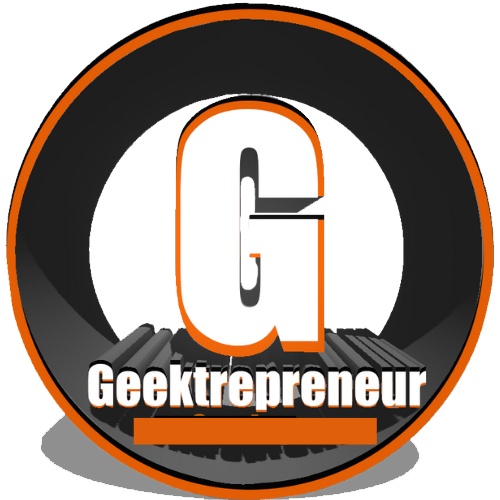Copyright vs. Generative AI on YouTube: The Geektrepreneur Breakdown 🎥💥
1. Human vs. Machine Authorship: Who Claims It? 🧠⚙️
U.S. Copyright Office stance: Only human-authored works get protected. AI-only creations? No copyright. (youtube.com, en.wikipedia.org)
Spoiler: A comic fully made by AI lost its copyright. Human tweaks? Only those are protected.
Takeaway: Want ownership? Step in and own your AI outputs—editing, curating, or remixing counts.
2. Training Data: The Hidden Thief 🕵️♂️🔍
Must-know: AI models train on huge data dumps—often copyrighted stuff.
Legal battles: Getty vs. Stability AI in the UK is underway (techradar.com, en.wikipedia.org, reuters.com), while Disney & Universal recently sued Midjourney for ripping off iconic characters (think Darth Vader and the Minions) (apnews.com).
Future alert: U.S. legislators want AI makers to disclose copyrighted materials used in training. The Generative AI Copyright Disclosure Act has arrived. (en.wikipedia.org)
3. YouTube’s Playbook on AI Content 📺✅
Transparency is king: YouTube now requires creators to tag “synthetic content” when AI alters something to look real—like deepfakes or cloned voices (blog.youtube).
What doesn't need a tag? Simple scripts, thumbnails, backgrounds, or fuzzy effects—no “AI stamp” required.
The big picture: Labeling helps avoid misinformation and builds audience trust.
4. DMCA Strikes Aren’t Just for Humans ⚠️
YouTube issues copyright strikes based on takedown notices—even if your content was AI-generated. Three strikes = channel nuked. (reddit.com)
No protective bubble: You might argue “public domain” for AI art, but others can still file and snag strikes.
5. Fair Use: AI's Legal Safety Net? 🧩⚖️
Some AI tool developers claim training on copyrighted content is “transformative” and thus fair use.
But critics argue: if AI outputs mimic copyrighted styles or content, that’s direct competition and possibly infringement (youtube.com, en.wikipedia.org, en.wikipedia.org).
Fair use = sketchy: Courts are hesitating to broadly apply it to AI training.
6. Global Laws to Watch 🌍
UK: Has “computer-generated” category—human creators are the safety net (en.wikipedia.org).
U.S.: Proposed laws requiring AI companies to list used copyrighted works before public release (en.wikipedia.org).
Pro tip: Policies across countries vary, but smart creators stay ahead of the curve.
7. What This Means for YouTube Creators
AI Use Case Should You Tag? Copyright Risk Best Practice AI voiceovers or deepfakes ✅ Yes 🚩 Yes Always tag “altered content” and get permissions Scriptwriting aid ❌ No ⚠️ Minor You’re good—but don’t copy text from others AI thumbnail or concept art 🤷 Maybe ⚠️ Mild AI image? Tag if human-likeness; else no Remix AI visuals ✅ Likely 🚨 Yes Edit heavily and attribute clearly Self-voiced AI narration ❌ No ✔️ Low Standard tool use—no tag needed
8. Top Tips to Protect Your YouTube Channel
Label transparently: Use YouTube’s “altered content” flag whenever AI simulates realism. No tag = red flag.
Proof of transformation: Keep source drafts and editing logs—helpful if Content ID or strikes threaten your video.
Get permissions: If using copyrighted clips or voices, license them. • Consider royalty‑free or Creative Commons content—just follow the terms!
Monitor legal trends: Watch Midjourney vs. Disney or Getty vs. Stability AI—landmark rulings may rewrite the rulebook.
Stay ethical: Misleading audiences with fake reality content? That’s against YouTube policy and public trust. Not worth it.
9. Why This Matters: Bigger Picture
AI is not magic law: Just because AI wrote it doesn’t make it free of rights.
Intellectual property matters: Creators invest time, emotion, money. AI must respect that.
Trust = sustainable growth: Transparency attracts loyal subscribers—not strike spam.
10. Looking to the Future
Policy shifts: Expect more rules—especially around transparency and training data disclosure.
Licensing boom: AI companies may pay to use copyrighted content.
Creator control: Tools may emerge to guard your content from being sucked into AI training sets.
Final Takeaway from Geektrepreneur 🚀
Be smart, be proud, be transparent.
Yes, AI can supercharge your creativity—but it doesn't override ethics or legal sense. Tag responsibly, credit properly, and evolve alongside the policy landscape. You’ll build a YouTube channel that thrives in the AI era—and stays strike-free. 💡
🔁 Viral Image Use:
Post the image above with these captions:
“AI helped me create... but humans still sign the checks. ✍️ #AI #Copyright #YouTube”
“When your AI voiceover sounds real—don’t forget the ‘altered content’ tag! 🛠️ #AIethics”
Geektrepreneur signing off—stay clever, stay compliant, and may your AI-powered channel fly high without legal turbulence.
Written by: Geektrepreneur

